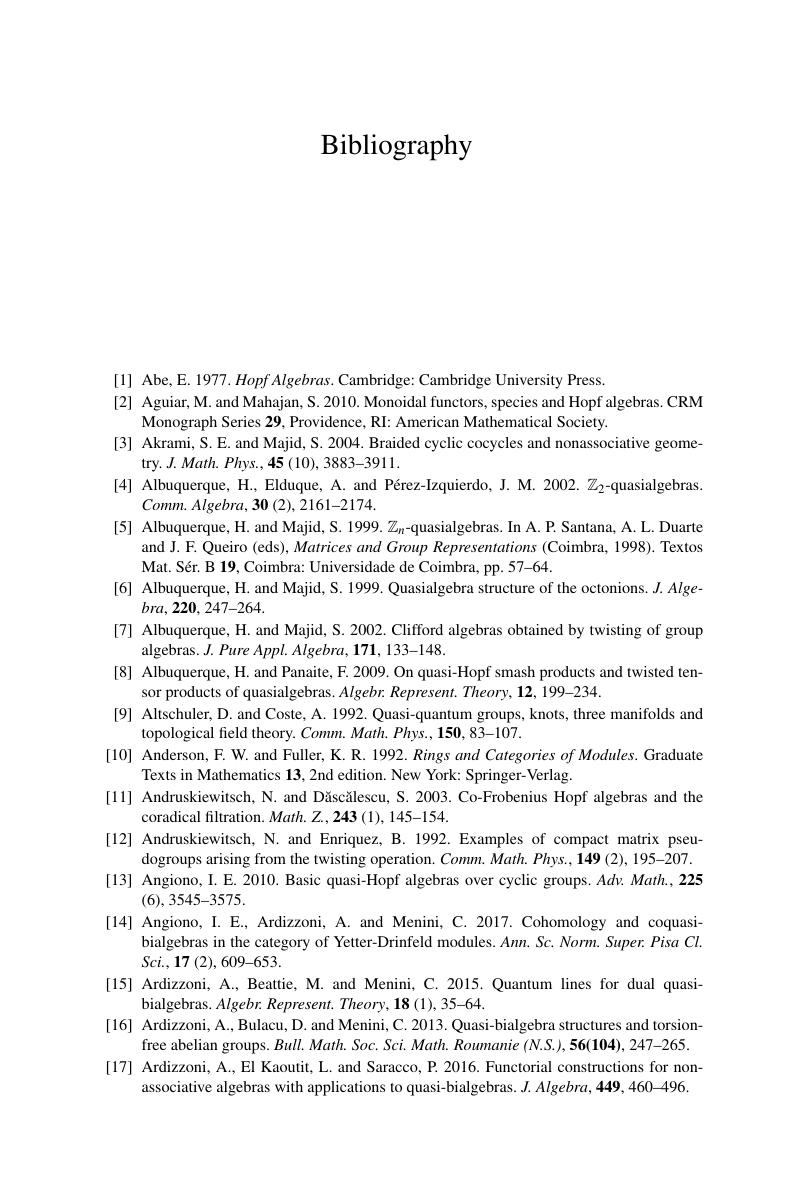Book contents
- Frontmatter
- Dedication
- Contents
- Preface
- 1 Monoidal and Braided Categories
- 2 Algebras and Coalgebras in Monoidal Categories
- 3 Quasi-bialgebras and Quasi-Hopf Algebras
- 4 Module (Co)Algebras and (Bi)Comodule Algebras
- 5 Crossed Products
- 6 Quasi-Hopf Bimodule Categories
- 7 Finite-Dimensional Quasi-Hopf Algebras
- 8 Yetter–Drinfeld Module Categories
- 9 Two-sided Two-cosided Hopf Modules
- 10 Quasitriangular Quasi-Hopf Algebras
- 11 Factorizable Quasi-Hopf Algebras
- 12 The Quantum Dimension and Involutory Quasi-Hopf Algebras
- 13 Ribbon Quasi-Hopf Algebras
- Bibliography
- Index
- References
Bibliography
Published online by Cambridge University Press: 21 February 2019
- Frontmatter
- Dedication
- Contents
- Preface
- 1 Monoidal and Braided Categories
- 2 Algebras and Coalgebras in Monoidal Categories
- 3 Quasi-bialgebras and Quasi-Hopf Algebras
- 4 Module (Co)Algebras and (Bi)Comodule Algebras
- 5 Crossed Products
- 6 Quasi-Hopf Bimodule Categories
- 7 Finite-Dimensional Quasi-Hopf Algebras
- 8 Yetter–Drinfeld Module Categories
- 9 Two-sided Two-cosided Hopf Modules
- 10 Quasitriangular Quasi-Hopf Algebras
- 11 Factorizable Quasi-Hopf Algebras
- 12 The Quantum Dimension and Involutory Quasi-Hopf Algebras
- 13 Ribbon Quasi-Hopf Algebras
- Bibliography
- Index
- References
Summary

- Type
- Chapter
- Information
- Quasi-Hopf AlgebrasA Categorical Approach, pp. 515 - 524Publisher: Cambridge University PressPrint publication year: 2019

